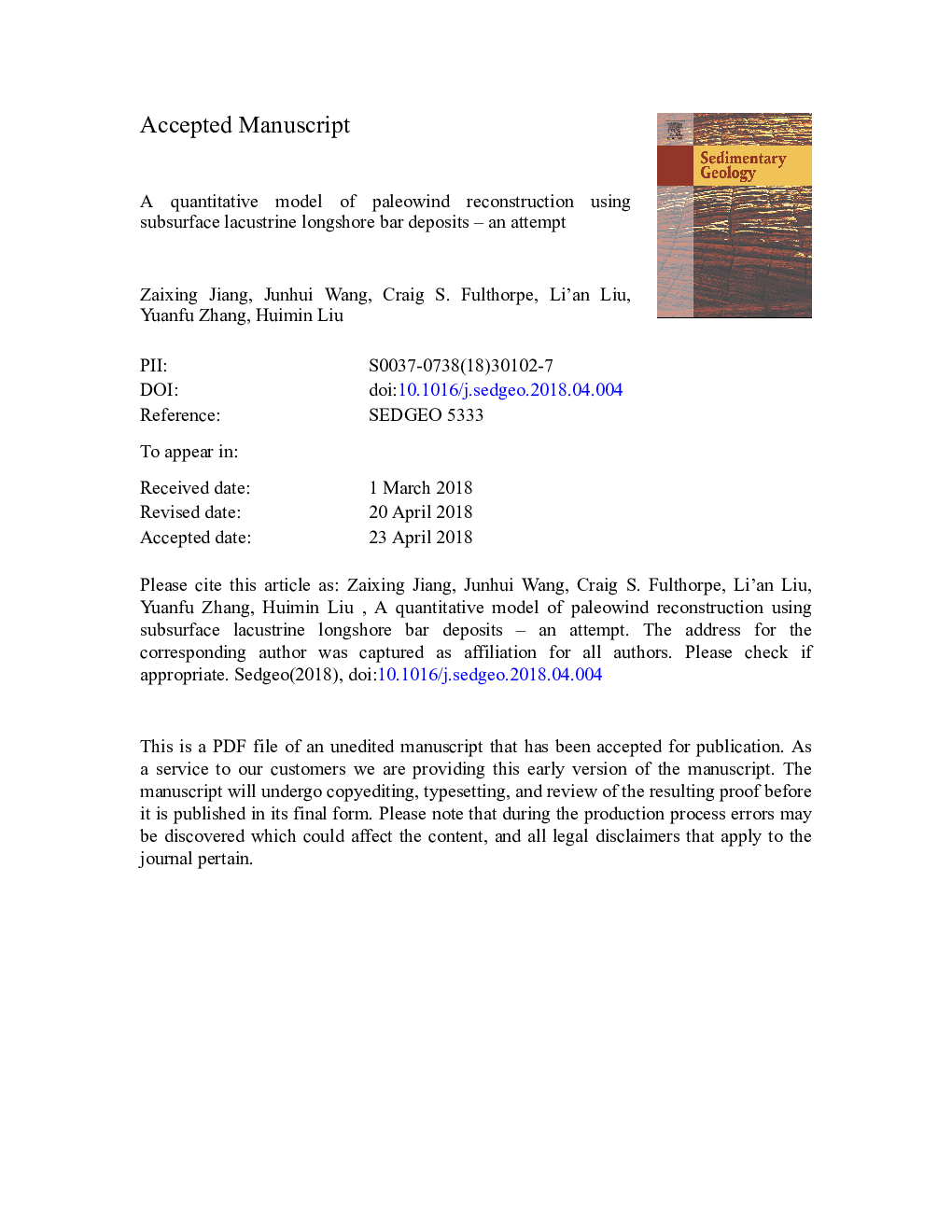| Article ID | Journal | Published Year | Pages | File Type |
|---|---|---|---|---|
| 8908493 | Sedimentary Geology | 2018 | 52 Pages |
Abstract
The paleo-atmospheric flow field is an important component of climate. However, the difficulty of constraining paleowind fields using geological information hinders quantification of paleo-atmospheric conditions. In this paper, it is proposed that the geometric characteristics of lacustrine longshore bars, widespread in both modern and ancient shallow lakes, can be used as proxies for paleowind fields. The self-organizational model of longshore bar formation indicates that bar geometry and dimensions are determined by breaking waves. Accordingly, a simple geometric model is proposed that incorporates empirical constraints, including: 1) the ratio of paleowater depths between bar crest and adjacent landward trough is constant, and 2) the bar landward slope reaches the angle of repose. The model suggests that the parameters longshore bar thickness (t), topographic slope of the bar-basement (α) and paleo-fetch of the basin (F) are sufficient to constrain paleowave conditions, and hence, based on wave statistics and wind-wave relationships, paleowind conditions. The method is then applied to an ancient example, the Dongying Depression in East China, to determine wind direction and strength during part of the Eocene (~45.0-44.2â¯Ma). The results show that contemporaneous northerly and southeasterly winds existed, with highest wind speeds of 6.9-13.5â¯mâ¯sâ1 and 7.5-18.2â¯mâ¯sâ1, respectively. These findings provide a new perspective on delineating paleowind conditions. Error analyses reveal that for a sufficiently large lake (fetch exceeding 30â¯km), calculation errors will be small to negligible, if longshore bar thickness is determined as precisely as possible. The method is applicable only for bars whose formation conforms to the self-organizational model.
Keywords
Related Topics
Physical Sciences and Engineering
Earth and Planetary Sciences
Earth-Surface Processes
Authors
Zaixing Jiang, Junhui Wang, Craig S. Fulthorpe, Li'an Liu, Yuanfu Zhang, Huimin Liu,
